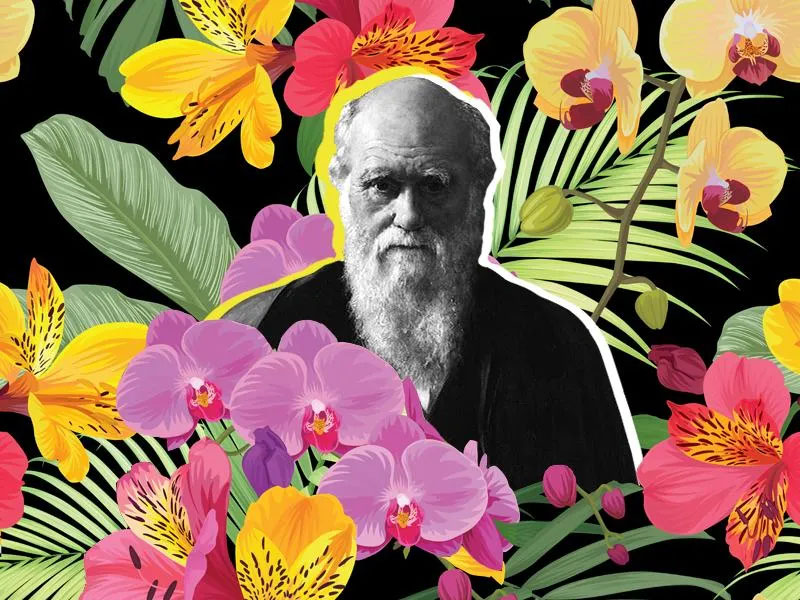0
You have 0 items in your cart
At 30,000 species, the orchid family is the largest and most diverse family of plants on the planet, being present in virtually every country and on every continent except Antarctica. They range in size from giants that weigh several tonnes to a height of mere millimetres, while their flowers come in every colour of the rainbow, from white to true black. It is precisely this astonishing diversity that has long fascinated scientists, including Charles Darwin.

Colonial Science and Evolutionary Evidence
Just three years after publishing “On the Origin of Species” in 1859, Darwin released a detailed study: “On the Various Contrivances by Which British and Foreign Orchids Are Fertilised by Insects.” While other Victorian gentlemen collected orchids as status symbols, Darwin saw in them compelling evidence for natural selection.
Darwin cultivated dozens of orchid species in his greenhouse at Down House, meticulously studying their specialised adaptations. His access to exotic specimens depended on Britain’s vast colonial network and plant hunters who extracted orchids from native habitats across the empire—often with little regard for environmental impact or indigenous knowledge.
A Prediction from Madagascar
Darwin’s most famous orchid study involved Madagascar’s spectacular star orchid (Angraecum sesquipedale), with its remarkable foot-long nectar tube. After examining this flower in 1862, Darwin predicted the existence of a moth with a proboscis long enough to reach the nectar—something his contemporaries found absurd.
Darwin didn’t live to see his prediction validated. Only in 1903, twenty-one years after his death, was the predicted moth discovered. Notably, while Darwin is celebrated for this insight, Malagasy people had long been familiar with this large moth and its relationship to the star orchid—indigenous knowledge that went unrecognized in Western scientific accounts.

Experimental Insights
In his greenhouse experiments, Darwin documented how different orchid species evolved unique pollination strategies. Some mimic female insects to trick males into attempting to mate with the flowers. Others produce scents resembling rotting flesh to attract carrion flies.
For Darwin, orchids provided the perfect rebuttal to one of the strongest arguments against evolution: the “argument from design.” Critics claimed that complex structures could not possibly have evolved through natural selection. Orchids demonstrated how intricate features could indeed develop gradually through small modifications of existing parts.
Gender and Recognition
Darwin’s era saw botany transforming from a pursuit considered suitable for women to a professionalized discipline increasingly dominated by men. Women botanists who made significant discoveries—like Agnes Joaquim (Ashken Hovakimian) with her orchid hybridization in Singapore—often saw their contributions minimized or attributed to accident rather than scientific intent.
The institutional structures of Victorian science systematically excluded women from formal recognition. The Royal Society, Britain’s premier scientific organization, wouldn’t admit women until 1945, long after Darwin’s time.
Conservation Legacy
Darwin’s work established co-evolution as a key evolutionary concept. The tight relationships between specialized orchids and their pollinators demonstrated how species could evolve in response to one another—a dance of adaptation and counter-adaptation.
Today, as orchids face unprecedented threats from habitat destruction and climate change, Darwin’s studies remind us of their extraordinary scientific value. Each orchid species represents not just a beautiful flower, but a living laboratory of evolution.
As you explore our “Orchid Obsession: A Love Through Time” exhibit at Chelsea Flower Show, consider how Darwin’s scientific inquiry represents just one chapter in humanity’s complex relationship with these remarkable plants—a relationship shaped by colonial power, gender dynamics, and our evolving understanding of the natural world.